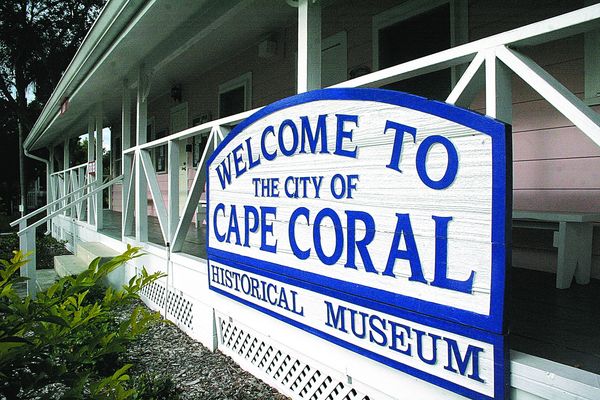Cape R/Sea Hawks flying high above north Cape

Tom Hayden
Planes reaching speeds of over 200 mph with wingspans over 80 inches that bring smiles to the faces of children and a sense of pride and accomplishment to those in their 90s. That is life at Seahawk Park for the Cape Coral R/Sea Hawks club and the pilots of the radio-controlled airplanes and helicopters.
This club has 315 members and nearly each day, pilots bring their creations to this one square mile piece of land, which will be part of the new Festival Park. Launching off the grass and paved runways are planes powered by turbine, nitro and electric engines or any other kind of propulsion you can dream up. Not far from strips is the helicopter pad. They fly to the delight of not only themselves, but those who came to watch, especially at special events.
“The Cape considers us one of their unique parks,” club president Joe Fannon said. “In fact, if you go to their website, we are No. 1 on their list. We have a friendly, beautiful field. It’s absolutely a wonderful time.”
The club took flight in the late 1980s, driven by a man’s desire and passion to give back to his community. Jim McCormack, a retired New York firefighter, always “loved the idea of parks.” He was part of a city committee pushing tourism in the area. McCormack, now 90, loved radio-controlled airplane flying and helped introduce it to the city. At first, small groups of people gathered to fly mainly gliders. Then, small, engine-powered planes took over. They need a large area to fly and found a city-owned area in north Cape Coral, called Agosy Park. According to McCormack, Roger Butler, who was Cape Coral’s mayor at the time, heard about this group of flying enthusiasts, many of them military veterans, calling themselves the Seahawks, and decided to rename the area, Seahawk Park.
McCormack said the group’s primary mission was not only to fly their planes but to also promote the building of other parks in the city. “We really wanted to do something,” he said. “We loved the idea of parks.”

The city tried to fund the parks through a general obligation bond, which needs to be approved by voters. That referendum failed in 2003. “We had mostly veterans from World War II living here on a fixed income and they didn’t want to pay more in taxes,” McCormack remembered about the referendum failing.
But the group kept flying. It had airshows for the public with small planes. McCormack recalled an event in New York, called “Gathering of the Giants,” where much bigger planes attracted large crowds. The idea was brought to the Cape and only planes with wingspans of at least 80 inches could perform. “That did the trick,” said McCormack, referring to the first show in 1997. “Gathering of the Giants” took off and is still a major fundraiser for the club, attracting thousands of people most years. That event, which only asks for a $5 donation from spectators, helps the club fund its paved runway, shelters, fencing and other items at the park. The city cuts the grass, but the club funds its own projects.
Fannon said one-third of the club members moved to Cape Coral specifically to be a part of the R/Sea Hawks, which is one of the 10 largest in the country among about 2,400 clubs. The pilots have ranged from 8 years old to many who are in their 90s. Former fighter pilots fly replicas of the real planes they flew in many wars, including the B-17, the P-51 Mustang and B-29 bombers former Air Force captain and club charter member John Agnew flew a radio-controlled replica of the B-17 he flew in 35 missions during World War II.
The club also is a tremendous community partner, helping sponsor many events, including the Cape Coral Mayors Scholarship fund. Each year, the club also brings people from the city’s Special Populations program to the airfield and helps them fly the beginner planes.
The club also will be part of a new and improved Festival Park, which is funded by a $60 million GO bond approved by voters in 2018. The new park could include a radio-controlled car area, as well as an extended runway for the R/Sea Hawks. The park also will include an amphitheater and multi-purpose fields.

Tom Hayden is a Cape Coral Museum of History board member and a Cape Coral City Council member, representing District 3. He writes a column twice a month for the Cape Coral Breeze on the city’s history.



